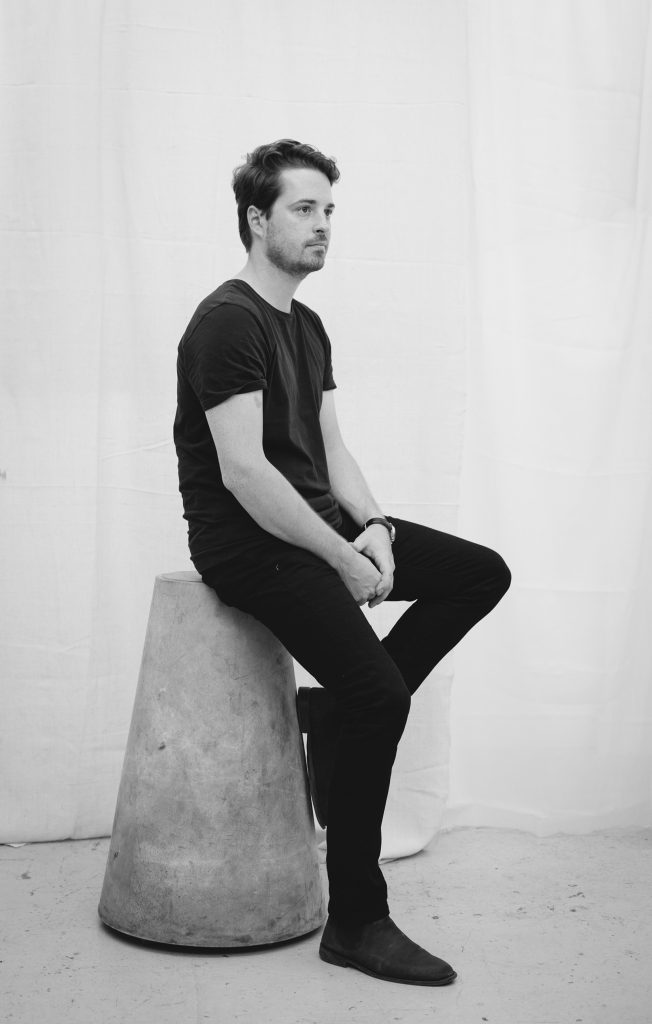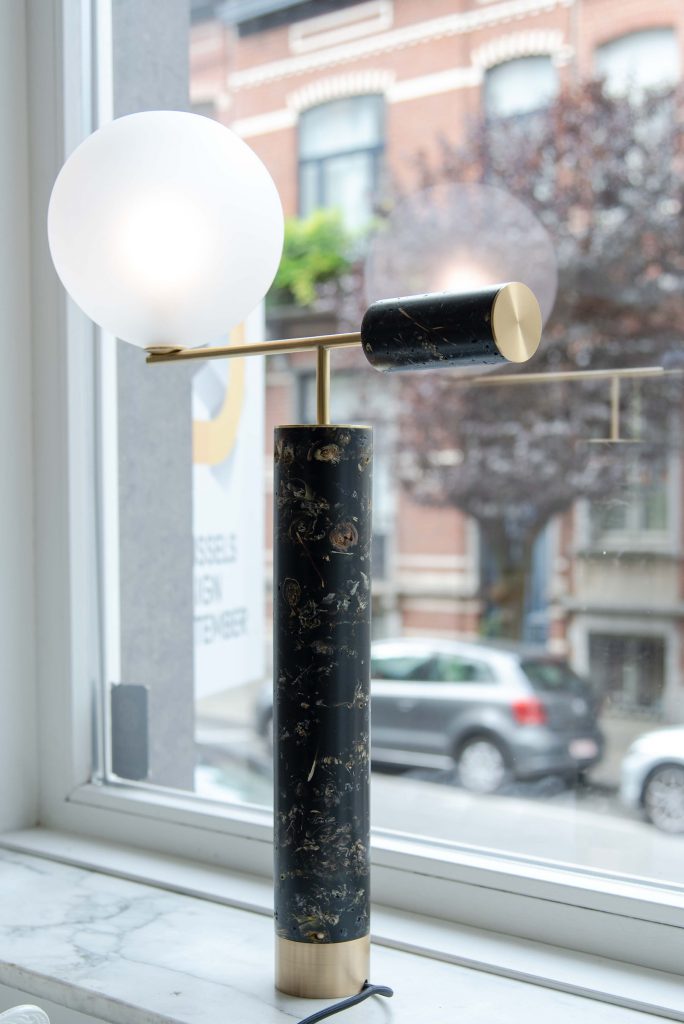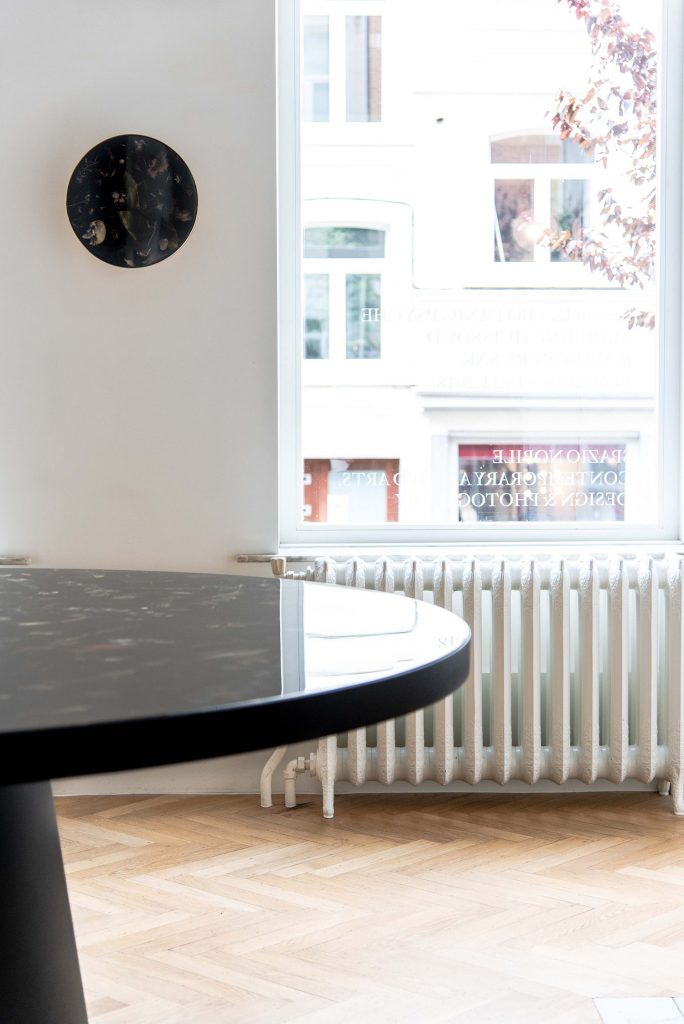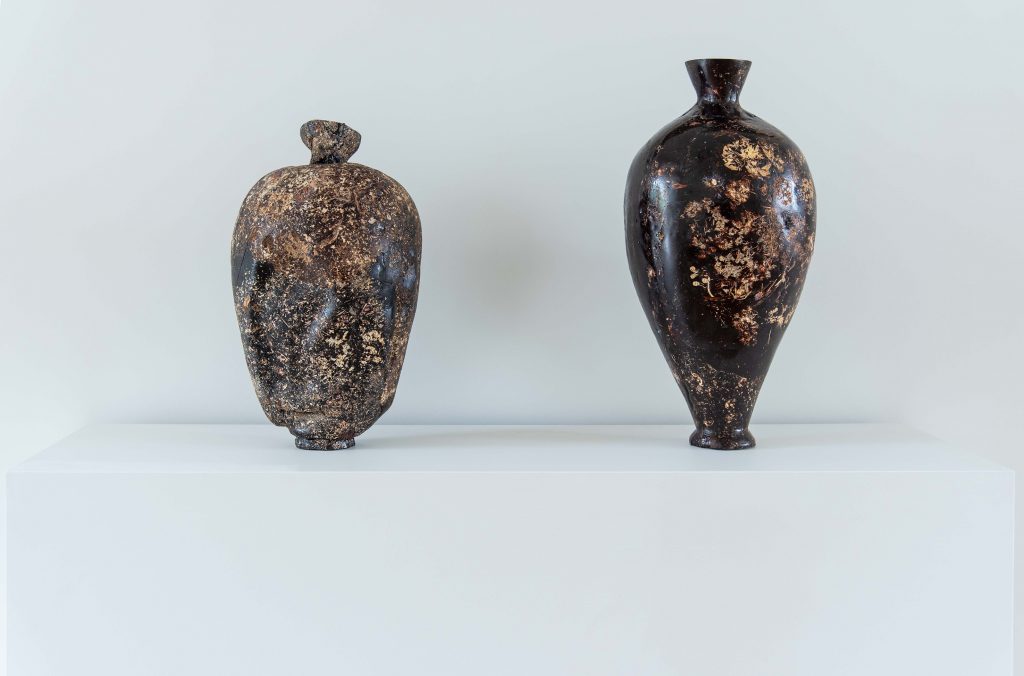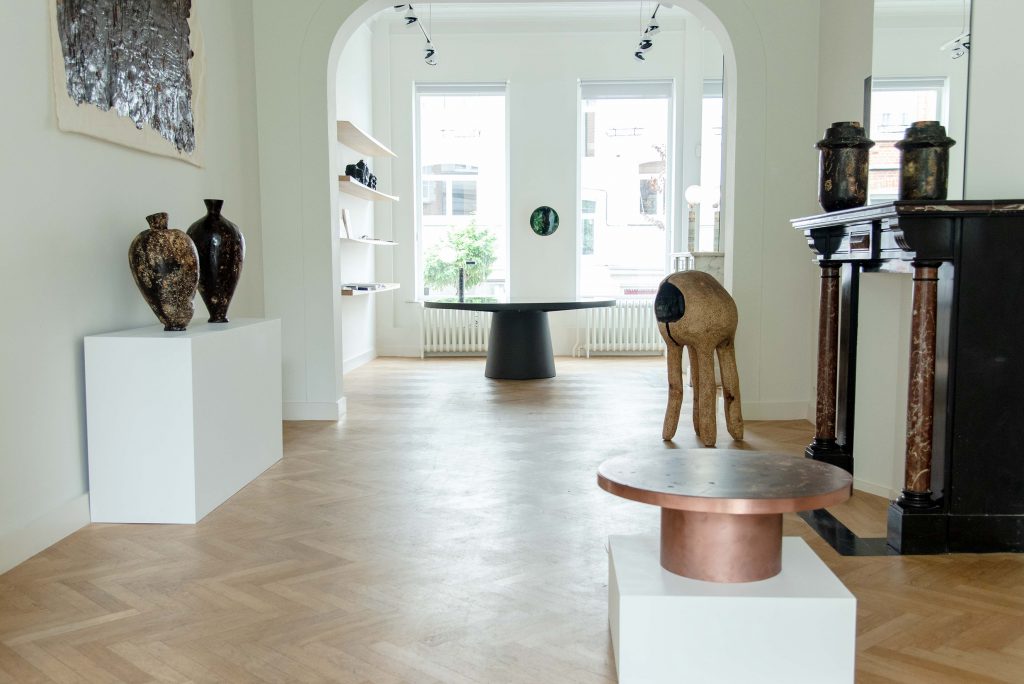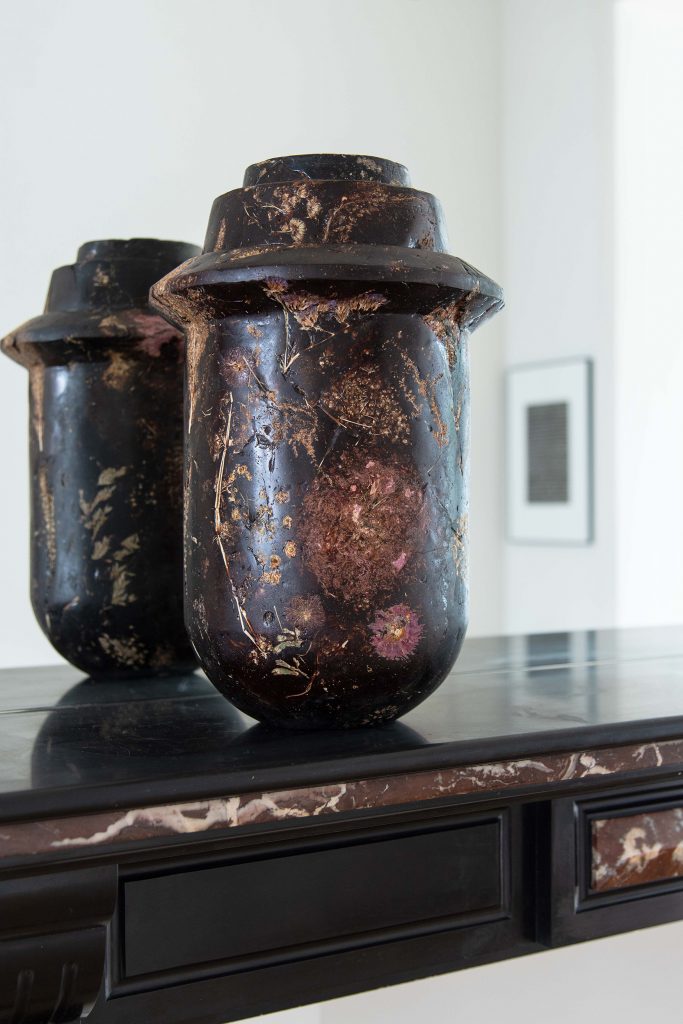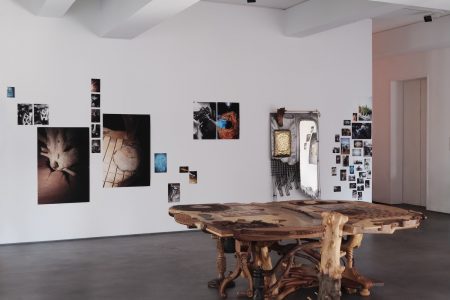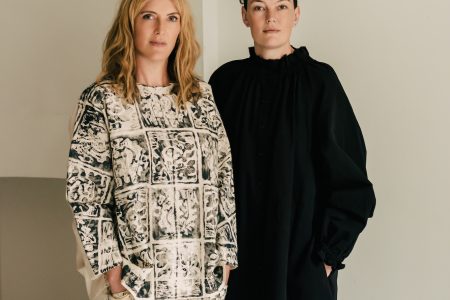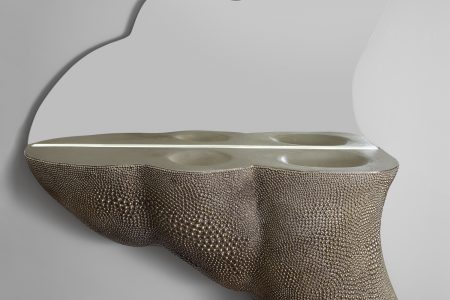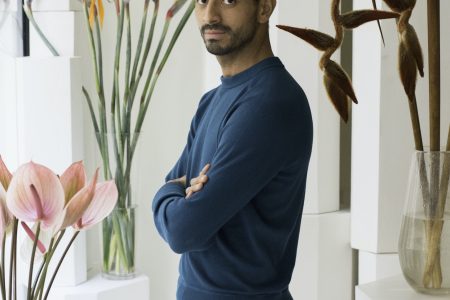Marcin Rusak – Botanic Psyche
Spazio Nobile’s currently “Botanic Psyche” exhibition reunites designers Marlène Huissoud and Marcin Rusak who both use nature as the material for their works.
Until last year the designers Marlène Huissoud (FR) and Marcin Rusak (PL) shared a studio in London. Despite now living and working in separate countries, they continue to share similar attitudes towards their design practices. Both designers work research natural materials and use these as the main materials of their pieces, translating elements of nature into objects such as tables and lighting. Huissoud works with insects, primarily honeybees and silkworms,using their byproducts and production process to create limited edition pieces. She offers an alternative to industrial design process collaborating with nature in order to create. In a slightly different approach Rusak uses waste flowersand leaves infused with resin to create his sculptural furniture pieces, fascinated by ideas of ephemerality, values and aesthetics. The pair will be reuniting for a duo show at Spazio Nobile Gallery in their exhibition Botanic Psyche, starting on September 14 until November 18.
How do you think sharing a studio with Marlène Huissoud influenced your work?
Marcin Rusak: I love Marlene for her open and positive attitude to life and I was lucky to get influenced by that. We have totally different ways of working but breaking your habits and opening yourself to new ways of thinking about making is a great thing.
How does it feel to come back together in the exhibition at Spazio Nobile after working in different countries?
Marcin Rusak: Although we shared a studio space together, we never had a chance to show pieces next to each other. I am very excited by this opportunity for the works to have a conversation and to see them interact in the space.
Can you tell us about one piece in the exhibition that you are particularly excited about? How was it made? What was the process like?
Marcin Rusak: I have a strong relationship to all the works I create so it is hard to give them a hierarchy but I really enjoy creating pieces that have layers to them. An example from the show is “Botany Plate” which is a result of a long research into future of plants. It has been hand drawn by an illustrator Clara Lacy as if it would be a new specie found in future but preserved in the same way as 17th century botanical drawings were made. We have etched it onto copper plate and printed an edition of monographs with it. Afterward the plate was chromed to prevent corrosion and to give it is’s original, futuristic feel.
Can you describe where your fascination of working with flowers and plants came from?
Marcin Rusak: I use flowers as a medium to talk about issues that are important to me: consumption, ephemerality and value. They often symbolise our consumption habits and the fragility of living materials. These are the qualities I want to expose in the works. They also are a material to me – that we process and manipulate. I have a 100 years of flower growers in my family history so maybe it is also a way of half subconscious reconnection with the past.
What has been the biggest surprise of working with flowers in your designs?
Marcin Rusak: That you can manipulate them in a way in which they continue to live after they have “died”. We pick them up from waste and process them, but after creating materials out of them, or directly placing in the works, they go on and enhance the piece and become a “living” feature.
What has been the biggest challenge?
Marcin Rusak: Working with natural materials always create challenges along the way. I think the biggest one so far was creating Flora – combining a fragile, full of moist matter, with synthetic, high curing temperature and very temperamental liquid. The two don’t necessarily go hand in hand together and it took us over two years to perfect it. We still keep on rediscovering new things within working with Flora.
How do you see your role as a designer? For example are you a materials designer? A collaborator with flora? etc.
Marcin Rusak: I am firstly interested in materials and new ways for interpreting them. This is a hugely interesting and vast subject for which the studio become a research practice. Once the material or process lead us to physical stage where it can be applied to piece, installation or furniture, we are working more like designers or artists, depending on the subject and function.
http://www.marcinrusak.com
Instagram: @marcinrusak
